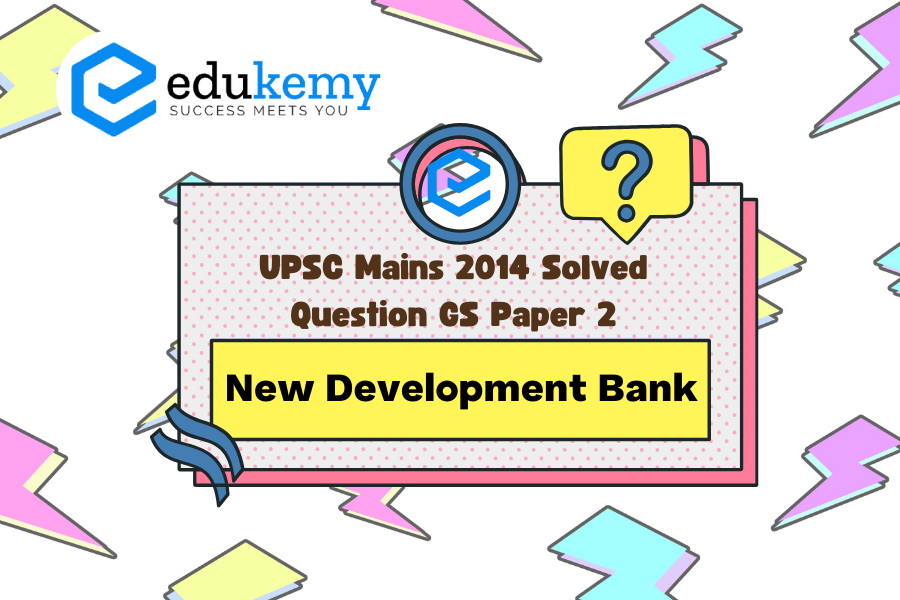India’s recent decision to join as a founding member of both the New Development Bank (NDB) and the Asian Infrastructure Investment Bank (AIIB) underscores its commitment to bolstering global economic cooperation and development initiatives. While both banks share the common goal of financing infrastructure and development projects, they differ significantly in their operational frameworks and strategic focus. The NDB, established by the BRICS nations (Brazil, Russia, India, China, South Africa), emphasizes funding projects in emerging economies, particularly in sectors like energy, transportation, and sustainable development. In contrast, the AIIB, with a broader membership including several Asian and non-Asian countries, prioritizes infrastructure investment across Asia, aiming to address the region’s growing development needs.
For India, participation in these institutions carries immense strategic significance. As a founding member of the NDB and AIIB, India gains access to substantial funding for its infrastructure projects, contributing to its ambitious development agenda. Moreover, membership in these banks amplifies India’s voice in shaping the policies and priorities of these institutions, enabling it to advocate for its interests on a global platform. Additionally, by engaging closely with other member countries, India can forge stronger economic and diplomatic ties, fostering regional cooperation and stability. Overall, India’s involvement in the NDB and AIIB not only facilitates its own development but also strengthens its position as a key player in shaping the future of global finance and infrastructure development.
Tag: Bilateral, regional and global groupings and agreements involving India and/or affecting India’s interests.
Contents
Decoding the Question:
- In the Introduction, try to write briefly about AIIB and NDB.
- In Body, Discuss the roles of both AIIB and NDB and mention how it is different.
- Write the strategic significance of these two Banks for India.
- In Conclusion, try to conclude by writing about the overall importance of AIIB and NDB.
Answer:
The need for the creation of new banks reflects the reality of a diverse and more complex world order, in which a Western-centric, “one size fits all” approach is no longer tenable. In mid- 2015 two multilateral development banks headed by emerging economies, the Asian Infrastructure Investment Bank (AIIB) and the New Development Bank (NDB, also known as the BRICS bank). While the AIIB is headed by China and backed by a founding shareholder membership of 57 countries, the NDB is operated on an equal basis between the BRICS nations – Brazil, Russia, India, China, and South Africa.

The Role of AIIB and NDB:
Asian Infrastructure Investment Bank (AIIB): The Asian Infrastructure Investment Bank (AIIB) is a multilateral development bank headquartered in Beijing.
- Its mission is to improve social and economic outcomes in its region, Asia, and beyond.
- The bank’s priorities are projects that promote sustainable infrastructure and support countries that are striving to meet environmental and development goals.
- It funds projects linking countries in the region and cross-border infrastructure projects for roads, rail, ports, energy pipelines, and telecoms across Central Asia and maritime routes in South East and South Asia and the Middle East.
- Its priorities also include private capital mobilization and encouraging partnerships that stimulate private capital investment, such as those with other multilateral development banks, governments, and private financiers.
New Development Bank (NDB): In the 2013 annual summit in Durban, South Africa, the BRICS countries: Brazil, Russia, India, China, and South Africa agreed to establish the BRICS Development Bank, which soon became known as the New Development Bank (NDB).
- At the summit, a Declaration and Action Plan was created, which asserted that the NDB would be set up in order to provide resources for infrastructure projects and sustainable development initiatives in the BRICS as well as other emerging and developing economies.
- The NDB plans to work alongside local and regional financial institutions to promote growth and development.
- The NDB is increasingly being viewed as a counterweight to Western-led global-development institutions such as the International Monetary Fund (IMF) and the World Bank
Despite the differences, both institutions were set up out of a shared frustration with existing multilateral lending forums, whose voting structures are stacked against emerging markets.
Strategic Significance of these Both Banks for India:
- It is said that AIIB and NDB are strategically up against USA dominated World Bank and IMF to Challenge their dominance, but, for India Strategic significance of these two Banks are Immense.
- For India, AIIB and NDB may have a significant impact on the energy choices available by lifting Western-imposed constraints on how the World Bank lends.
- India is the second-largest stakeholder in the AIIB and the NDB, both of which are likely to be important lenders for the projects envisaged as a part of the OBOR strategy. Thus, creating a check and balance for China.
- The NDB has so far approved 18 projects in India, including emergency loans of $2 billion to support health spending and economic recovery in the aftermath of the COVID-19 pandemic.
- Recently, The New Development Bank of the BRICS countries has fully disbursed a USD one billion emergency assistance loan to India to help it contain the spread of COVID-19 and reduce human, social and economic losses caused by the coronavirus pandemic.
The AIIB and NDB showcase how developing nations can effectively channel their increasing strengths to global development goals, as well as promoting new norms of shared leadership and responsibility in the advancement of, rather than in contradiction to, the existing international order. The new banks can act as catalysts for the international financial system reform and make traditional MDBs more responsive to the needs of developing countries.
In case you still have your doubts, contact us on 9811333901.
For UPSC Prelims Resources, Click here
For Daily Updates and Study Material:
Join our Telegram Channel – Edukemy for IAS
- 1. Learn through Videos – here
- 2. Be Exam Ready by Practicing Daily MCQs – here
- 3. Daily Newsletter – Get all your Current Affairs Covered – here
- 4. Mains Answer Writing Practice – here


